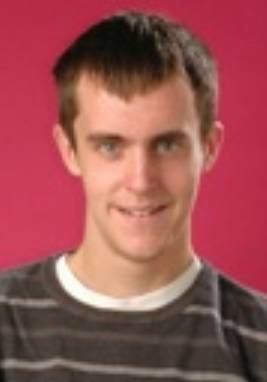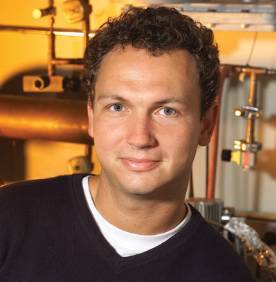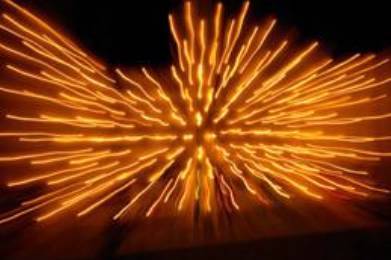| | | | | | | | | | | | | | |
|
| |
|
|
|
|
|
|
|
|
|
The wavefunction is a real physical object. 1) M.F. Pusey. 2) E.S. Reich.
|
|
|
|
|
|
|
|
|
| |
|
|
|
| |
|
|
|
|
|
|
|
| |
|
|
|
|
|
|
|

On the reality of the quantum state. Matthew F. Pusey et al.
Quantum states are the key mathematical objects in quantum theory. It is therefore surprising that physicists have been unable to agree on what a quantum state represents. One possibility is that a pure quantum state corresponds directly to reality. But there is a long history of suggestions that a quantum state (even a pure state) represents only knowledge or information of some kind. Here we show that any model in which a quantum state represents mere information about an underlying physical state of the system must make predictions which contradict those of quantum theory.
Quantum theorem shakes foundations. Eugenie Samuel Reich.
 Mathematical device or physical fact? The elusive nature of the quantum wavefunction may be pinned down at last.
Mathematical device or physical fact? The elusive nature of the quantum wavefunction may be pinned down at last.
At the heart of the weirdness for which the field of quantum mechanics is famous is the wavefunction, a powerful but mysterious entity that is used to determine the probabilities that quantum particles will have certain properties. Now, a preprint posted online on 14 November1 reopens the question of what the wavefunction represents — with an answer that could rock quantum theory to its core. Whereas many physicists have generally interpreted the wavefunction as a statistical tool that reflects our ignorance of the particles being measured, the authors of the latest paper argue that, instead, it is physically real.
“I don't like to sound hyperbolic, but I think the word 'seismic' is likely to apply to this paper,” says Antony Valentini, a theoretical physicist specializing in quantum foundations at Clemson University in South Carolina.
Valentini believes that this result may be the most important general theorem relating to the foundations of quantum mechanics since Bell’s theorem, the 1964 result in which Northern Irish physicist John Stewart Bell proved that if quantum mechanics describes real entities, it has to include mysterious “action at a distance”.
Action at a distance occurs when pairs of quantum particles interact in such a way that they become entangled. But the new paper, by a trio of physicists led by Matthew Pusey at Imperial College London, presents a theorem showing that if a quantum wavefunction were purely a statistical tool, then even quantum states that are unconnected across space and time would be able to communicate with each other. As that seems very unlikely to be true, the researchers conclude that the wavefunction must be physically real after all.
David Wallace, a philosopher of physics at the University of Oxford, UK, says that the theorem is the most important result in the foundations of quantum mechanics that he has seen in his 15-year professional career. “This strips away obscurity and shows you can’t have an interpretation of a quantum state as probabilistic,” he says.
More related stories
The debate over how to understand the wavefunction goes back to the 1920s. In the ‘Copenhagen interpretation’ pioneered by Danish physicist Niels Bohr, the wavefunction was considered a computational tool: it gave correct results when used to calculate the probability of particles having various properties, but physicists were encouraged not to look for a deeper explanation of what the wavefunction is.
Albert Einstein also favoured a statistical interpretation of the wavefunction, although he thought that there had to be some other as-yet-unknown underlying reality. But others, such as Austrian physicist
Erwin Schrödinger, considered the wavefunction, at least initially, to be a real physical object.
The Copenhagen interpretation later fell out of popularity, but the idea that the wavefunction reflects what we can know about the world, rather than physical reality, has come back into vogue in the past 15 years with the rise of quantum information theory, Valentini says.
Rudolph and his colleagues may put a stop to that trend. Their theorem effectively says that individual quantum systems must “know” exactly what state they have been prepared in, or the results of measurements on them would lead to results at odds with quantum mechanics. They declined to comment while their preprint is undergoing the journal-submission process, but say in their paper that their finding is similar to the notion that an individual coin being flipped in a biased way — for example, so that it comes up 'heads' six out of ten times — has the intrinsic, physical property of being biased, in contrast to the idea that the bias is simply a statistical property of many coin-flip outcomes.
Quantum information
Robert Spekkens, a physicist at the Perimeter Institute for Theoretical Physics in Waterloo, Canada, who has favoured a statistical interpretation of the wavefunction, says that Pusey's theorem is correct and a “fantastic” result, but that he disagrees about what conclusion should be drawn from it. He favours an interpretation in which all quantum states, including non-entangled ones, are related after all.
Spekkens adds that he does expect the theorem to have broader consequences for physics, as have Bell’s and other fundamental theorems. No one foresaw in 1964 that Bell’s theorem would sow the seeds for quantum information theory and quantum cryptography — both of which rely on phenomena that aren’t possible in classical physics. Spekkens thinks this theorem may ultimately have a similar impact. “It’s very important and beautiful in its simplicity,” he says.
References
Pusey M. F., Barrett, J. & Rudolph, T. Preprint at http://lanl.arxiv.org/abs/1111.3328 (2011). See over.

|
|
|
|
|
|
|
|
|
|
|
|
|
|
| |
|
That's what I (L.R.) had affirmed and experimentally proved still in 1972:
and once more in 1986:.
|
|
|
|
|
| |
|
|
Matthew F. Pusey
http://www3.imperial.ac.uk/controlledqu antumdynamics/people/students/cohorto ne/matthewpusey
|
|
|
On the reality of the quantum state.
Matthew F. Pusey, Jonathan Barrett, Terry Rudolph
(Submitted on 14 Nov 2011 (v1), last revised 7 May 2012 (this version, v2))
http://lanl.arxiv.org/abs/1111.3328
|
|
| |
|
|
|
|
|
|
|
|
Eugenie Samuel Reich
http://www.nature.com/nature/journ al/v459/n7247/full/459645a.html
|
|
| |
|
|
Quantum theorem shakes foundations.
The wavefunction is a real physical object after all, say researchers.
Eugenie Samuel Reich
17 November 2011
NATURE. International Weekly Journal of Science.
http://www.nature.com/news/quantum-theorem-shakes-foundations-1.9392
|
|
| |
CONSERNING THE REALITY OF VACUUM FIELD (L.R.)
http://www.nature.com/news/2011/110603/full/news.2011.346.html
Moving mirrors make light from nothing
Geoff Brumfiel
Researchers claim to have produced sought-after quantum effect.

A moving mirror can generate light from a vacuum.
Phil.M.Rogers/Alamy
A team of physicists is claiming to have coaxed sparks from the vacuum of empty space1. If verified, the finding would be one of the most unusual experimental proofs of quantum mechanics in recent years and "a significant milestone", says John Pendry, a theoretical physicist at Imperial College London who was not involved in the study.
The researchers, based at the Chalmers University of Technology in Gothenburg, Sweden, will present their findings early next week at a workshop in Padua, Italy. They have already posted a paper on the popular pre-print server arXiv.org, but have declined to talk to reporters because the work has not yet been peer-reviewed. High-profile journals, including Nature, discourage researchers from talking to the press until their findings are ready for publication.
Nevertheless, scientists not directly connected with the group say that the result is impressive. "It is a major development," says Federico Capasso, an experimental physicist at Harvard University in Cambridge, Massachusetts, who has worked on similar quantum effects.
At the heart of the experiment is one of the weirdest, and most important, tenets of quantum mechanics: the principle that empty space is anything but. Quantum theory predicts that a vacuum is actually a writhing foam of particles flitting in and out of existence.
The existence of these particles is so fleeting that they are often described as virtual, yet they can have tangible effects. For example, if two mirrors are placed extremely close together, the kinds of virtual light particles, or photons, that can exist between them can be limited. The limit means that more virtual photons exist outside the mirrors than between them, creating a force that pushes the plates together. This 'Casimir force' is strong enough at short distances for scientists to physically measure it.
From virtual to real
For decades, theorists have predicted that a similar effect can be produced in a single mirror that is moving very quickly. According to theory, a mirror can absorb energy from virtual photons onto its surface and then re-emit that energy as real photons. The effect only works when the mirror is moving through a vacuum at nearly the speed of light — which is almost impossible for everyday mechanical devices.
Per Delsing, a physicist at the Chalmers University of Technology, and his colleagues circumvented this problem using a piece of quantum electronics known as a superconducting quantum interference device (SQUID), which is extraordinarily sensitive to magnetic fields.
The team fashioned a superconducting circuit in which the SQUID effectively acted as a mirror. Passing a magnetic field through the SQUID moved the mirror slightly,
and switching the direction of magnetic field several billion times per second caused it to 'wiggle' at around 5% the speed of light, a speed great enough to see the effect.
The result was a shower of microwave photons shaken loose from the vacuum, the team claims. The group's analysis shows that the frequency of the photons was roughly half the frequency at which they wiggled the mirror — as was predicted by quantum theory.
Capasso calls the experiment "very clever". He doubts that the effect has any practical use because it doesn't generate large numbers of photons, but he considers it a nice demonstration of quantum mechanics. He still hopes to see a moving piece of metal generate detectable light from the vacuum, and believes that micromechanical systems may eventually be able to reach such speeds.
Pendry says that the result, if it stands up, is bound to generate excitement. "Work in this area stirs considerable passion in the breasts of physicists."
References
Wilson, C. M. et al.
Preprint at http://arxiv.org/abs/1105.4714 (2010)
|
|
| |
|
|
|
|
|
|
|
|
|
|
Mathematical device or physical fact? The elusive nature of the quantum wavefunction may be pinned down at last.
Andy Hair/iStockphoto
|
|
|
NATURE
Readers' choice
The most read news stories of 2011.
Quantum mechanics, particle physics and quirky biology are the big winners in our line up of the most popular news stories from 2011
6. Quantum theorem shakes foundations
The wavefunction is a real physical object after all, say researchers. 17 November 2011
http://www.nature.com/news/news-readers-choice-1.9643#/comments
|